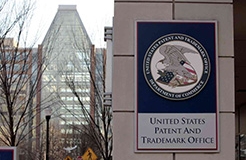Did not receive verification mail? Please confirm whether the mailbox is correct or not Re send mail

Vapor
- 2021-03-31 11:05:30
Cellular Wireless Standard Essential Patents: A Survey of FRAND-Related Statements

Over the years, several entities have published statements related to licensing 4G/5G cellular wireless Standard Essential Patents (SEPs) on a Fair, Reasonable and Non-Discriminatory (FRAND) basis. These include entities that are primarily licensors of SEPs, entities who sell network equipment products or components and who are also significant licensors of SEPs, entities who sell end user products and who are significant licensees of SEPs, an association focused on FRAND policy development and a patent pool. An analysis of these statements reveals several common themes, but also a wide range of opinions on such issues. Below is the first in a series of articles that will review these statements with a view to highlighting some of these differing viewpoints, and provides context for these statements by way of reference to the policies of standards setting organizations and related legal pronouncements.
Transparency
A
common thread among many FRAND-related statements is a reference to
“transparency”. Most do so, however, without fully explaining what that
entails. For example, one of InterDigital’s FRAND-related statements
indicates that it “…believes in a balanced and pragmatic approach to
FRAND licensing, one that focuses on increased transparency…”.
Similarly, Apple’s FRAND statement says “[b]oth SEP licensors and
licensees should negotiate transparently and willingly based on an
exchange of relevant information.” Notwithstanding the common
terminology, a more in-depth review of these statements reveals several
areas of disagreement on this issue.
One such area of
disagreement is with respect to the use of confidentiality
arrangements. For example, InterDitigal is of the view that
“[l]icensing, like any business negotiation and agreement, involves some
measure of confidentiality”. A position paper of The Fair Standards
Alliance (FSA), of which Apple, Google and Microsoft are listed as a
members, however, opposes the use of confidentiality agreements on the
basis that they “prevent companies from discussing the proposed or
existing financial terms of the licenses (such as upfront payments or
royalty rates) with any other companies”. The FSA, therefore, is
apparently of the view that should there not only be transparency
between the SEP owner and a prospective licensee, but also with respect
to all other prospective licensees. In contrast to the views of the FSA,
Motorola Solutions’ FRAND statement notes that “[a]lthough it may be
feared that confidentiality provisions in standard essential agreements
(or separate confidentiality agreements) may be used to mask non-FRAND
terms, confidentiality agreements actually enable the transparency
needed for FRAND by protecting the information exchanged during
negotiations.” For example, a pre-license agreement regarding
maintaining confidentiality can result in more transparency between the
licensor and prospective licensee if third party licenses can only be
disclosed subject to such an agreement.
Although the commitment
to license on FRAND terms and conditions pursuant to Section 6 of the
ETSI IPR Policy makes no explicit mention of “transparency”, Section 4.4
of the ETSI Guide on Intellectual Property Rights (IPRs) does
recognizes the use of non-disclosure agreements in licensing
negotiations, adding that “this general practice is not challenged”.
Perhaps reflecting that the use of confidentiality arrangements is an
established industry practice, it is also worth noting that many of the
leading cases in the FRAND space consider confidential license
agreements as part of unpacking analyses performed therein without any
mention of FRAND violations resulting therefrom. See for example,
Unwired Planet International Ltd -and- (1) Huawei Technologies Co. Ltd
(2) Huawei Technologies (UK) Co. Ltd -and- Unwired Planet LLC, [2017]
EWHC 2988 (Pat) (In The High Court of Justice Chancery Division Patents
Court), and Findings of Fact and Conclusions of Law, Microsoft
Corporation v. Motorola, Inc. , et al. , and Motorola Mobility, Inc. ,
et al. , v. Microsoft Corporation, Case No: C10-1823JLR (W. D.
Washington, April 25, 2013).
The potential antitrust implications
of confidentiality agreements, particularly in the context of FRAND
licensing, were explored in an article by Mark R. Patterson titled
“Confidentiality in Patent Dispute Resolution: Antitrust Implications”,
Washington Law Review, Volume 93, Page 827 (2018). Amongst other things,
the author notes that the use of confidentiality agreements in
resolving patents disputes is unlikely to be a per se antitrust
violation:
Despite
the summary condemnations in the cases just discussed, though, it seems
likely that if a court were to consider these agreements under
antitrust law, it likely would apply the rule of reason. The rule of
reason requires an assessment and balancing of anticompetitive and
procompetitive effects, and usually (though not always) also involves an
assessment of market power.
Patterson further recognizes
that a commitment to license on FRAND terms and conditions is not itself
a commitment to being transparent, and that the former could be met
despite a lack of full disclosure:
To
be sure, even a commitment to FRAND licensing is not (now) expressly a
commitment to transparent licensing. It would be possible for a
patentee to license all its licensees on FRAND terms without revealing
to any licensees the licensing terms applied to others, just as it would
still be conceivable that all licensees would negotiate the same (or
non-discriminatory) terms without those terms being publicly available.
Another
area of disagreement related to the issue of transparency, and the use
of confidentiality agreements, involves the information to be provided
by licensors to prospective licensees, as well as when such information
is to be provided. The FSA, for example, is of the view that prospective
licensees should be entitled to not only “existing” terms of licenses
but “proposed” terms as well. Further, in the same position paper, the
FSA states that “during negotiations of licenses, SEP holders represent
to potential licensees that other companies have accepted the financial
terms of the proposed license” but “[b]ecause of the confidentiality
restrictions imposed on the prospective licensee (and other licensees)
the prospective licensee is unable to verify if what the SEP holder has
represented is true” seemingly implying that prospective licensees
should be entitled to such information at a negotiation stage.
One
entity whose licensing practices indicate it may not agree with such a
broad transparency obligation is Ericsson, as evidenced by HTC’s 2017
complaint (First Amended Complaint paragraph 59, HTC Corporation and HTC
America, Inc. v. Telefonaktiebolaget LM Ericsson and Ericsson Inc.,
Case No.: 2:17-cv-00534-MJP (W.D. Washington, April 6, 2017)) alleging
that Ericsson breached its FRAND commitment to HTC by not providing
sufficient pre-litigation disclosures:
Ericsson
also unfairly exploits its superior information concerning the license
rates paid by other companies. Ericsson has perfect information
concerning the license rates paid by others. Potential licensees,
however, have little or no information concerning “comparable sales.”
Ericsson ensures its ability to engage in discriminatory pricing by
conducting licensing negotiations in secret, taking advantage of this
asymmetry of information. Ericsson requires that potential licensees
enter into adhesive non-disclosure agreements for all negotiations and
licenses. As a consequence, only Ericsson knows the terms and rates paid
by other licensees. Armed with this one-sided knowledge, Ericsson then
leverages this asymmetry of information in order to extract
discriminatory terms from its licensees.
While Ericsson
was found to have breached its duty of good faith in carrying out its
contractual obligation to negotiate with HTC for a license to Ericsson’s
cellular SEPs, it is not possible to know whether or not the jury’s
decision turned on any lack of pre-suit transparency given that finding
resulted from a jury verdict (Verdict Form, HTC Corporation, HTC America
Inc, v. Telefonaktiebolaget LM Ericsson, Ericsson Inc, Case No:
6-18-CV-00243-JRG (E.D. Texas, February 15, 2019)).
From a
compliance with FRAND perspective, some European courts in non-discovery
jurisdictions have required SEP owners seeking injunctions to disclose
prior licenses to establish that their offers are non-discriminatory.
See for example Unwired Planet v. Huawei, Case I-2 U 31/16 (OLG
Düsseldorf, Mar. 22, 2019). The authors of this article are unaware,
however, of any court decisions extending such an obligation to pre-suit
negotiations. Other European courts have not even required such
information be provided during litigation (see Koninlijke Philips N. V.
vs. Asustek Computers Inc., Case number 200. 221. 250/01 (Court of
Appeal of the Hague, May 7, 2019), pages 57-75). The Guidelines on the
handling of the antitrust compulsory license objection according to
Huawei v. ZTE within the Munich Procedure of Handling Patent
Infringement Cases (non-literal translation provided by the Work Group
on Patent Judicature in Germany state, however, that “Insofar as the
patent user concludes an appropriate confidentiality agreement, the
patent proprietor must – as far as he is formally allowed to do so
within the framework of the confidentiality obligations already entered
into – also provide further confidential details on contracts already
concluded”, albeit in the context of “the handling of compulsory license
objections under antitrust law in patent disputes”.
Listing Licensed SEPs
Regarding
information to be provided by licensors, Apple’s FRAND statement
specifically indicates that “SEP owners should identify each SEP to be
licensed…”. Of the FRAND-related statements analyzed, only Sisvel makes
lists of specific SEP assets being licensed available on its website.
One reason that such information is not being made readily available may
be due to the living nature of the portfolios being licensed by others,
which makes keeping an up-to-date list challenging. The fact that such
information is not available on an entity’s website does not, however,
mean that it is not being provided on a bilateral basis. Another reason
may be that these licensors have already disclosed to ETSI and other
standard bodies their potentially essential patents and may not believe
they are obligated to provide more. See for example, Lenovo’s recent
response to a Statement of Interest filed by the Antitrust Division of
the Department of Justice (Plaintiffs’ Statement In Response to the
United States of America’s Statement of Interest page 7, Lenovo (United
States) Inc. and Motorola Mobility LLC v. InterDigital Technology
Corporation, IPR Licensing, Inc. , InterDigital Communications, Inc. ,
InterDigital Holdings, Incl, InterDigital Patent Holdings, Inc. and
InterDigital, Inc. , C. A. No. 209-493 (LPS) (Delaware, August 5,
2020)), in the former’s anti-trust case against InterDigital, alleging
that InterDigital does not provide a list of SEPs separate from those
that declared as potentially essential:
Instead,
Lenovo has alleged that IDC implemented a multi-pronged anticompetitive
scheme of (1) making false promises that it would license any patents
essential to the standards on FRAND terms, and (2) declaring thousands
of patents as potentially essential to the standards without regard to
their actual essentiality and thereafter refusing to identify with
particularity which of the patents it declared as potentially essential
it contends are actually essential.
As will be discussed
in an upcoming article, InterDigital’s position may be reflective of its
views on who bears the burden of proof in FRAND licensing.
A Different Approach for Avanci
Finally,
Avanci’s approach to transparency is worth noting in that it seeks to
address the issue in a different way, namely, by requiring all licensees
pay identical per unit rates for the same types of devices:
Avanci’s
transparent pricing model will include published royalty rates on its
website, making them available to all in the industry. In doing so,
Avanci offers all competitors an identical price for a license to an
aggregated portfolio of patents from the leading patent owners.
This
consistent and transparent approach will help to lower IoT companies’
transaction costs and ultimately simplify their license agreement
process. Instead of building a team of lawyers and technologists to
secure standard-essential wireless patents on the most favorable terms
possible, companies in the IoT space can focus on what they do
best—developing innovative new products and applications built on a
strong foundation of wireless technology.
Presumably,
if Avanci rigidly adheres to such pricing, there is less of a need for
prior licenses to be made available to prospective licensees, though
non-financial terms could still vary.
In the next article, we
will analyze various FRAND-related statements with a view to
unconditional FRAND offers, arbitrating FRAND terms and conditions,
specific FRAND rates and their justification, how such specific rates
may be applied, and portfolio licensing.
Source:iprdaily.com
Author:Curtis Dodd、Chris Dubuc Harfang IP Investment Corp
Editor:IPRdaily-Vapor
- I also said the two sentence
- Also you can enter 140words
 Apple ordered to pay $308.5 million after jury finds it infringed on digital rights management patent
Apple ordered to pay $308.5 million after jury finds it infringed on digital rights management patent ITC delays preliminary ruling on LG-SK battery patent suit
ITC delays preliminary ruling on LG-SK battery patent suit Senators unveil bill to close 'patent gap' faced by women
Senators unveil bill to close 'patent gap' faced by women Nokia and Samsung sign video patent licensing deal, Nokia will receive royalty payments
Nokia and Samsung sign video patent licensing deal, Nokia will receive royalty payments


